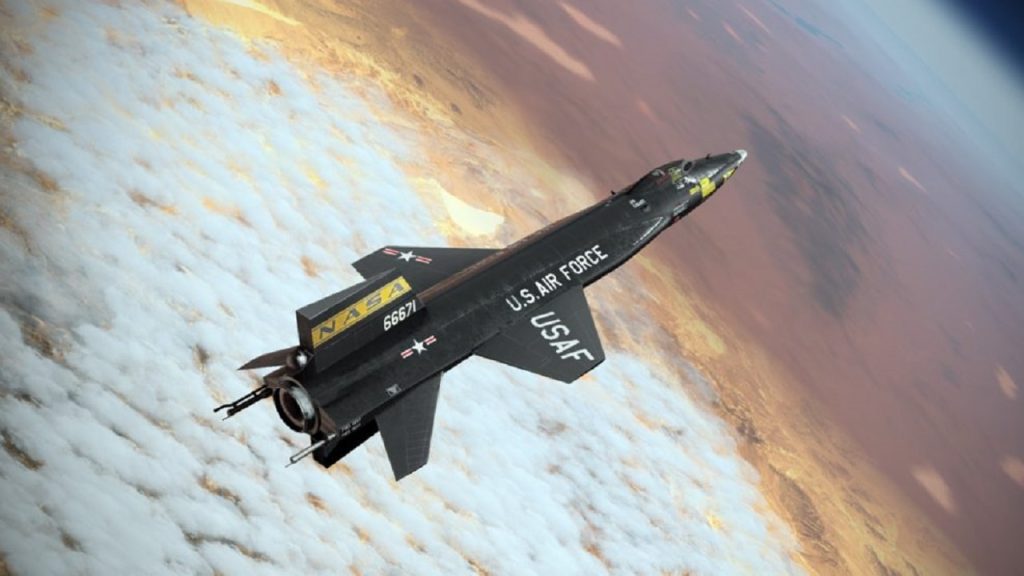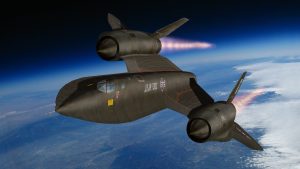| Meet the North American X-15 |

| The X-15 Flew Really Fast – Simplyput, no manned aircraft has flown faster than the North American X-15.
The hypersonic rocket-powered aircraft was developed as a joint effort by the U. S. Air Force and NASA as part of its X-plane series. As the first operational “spaceplane,” it reached 100 km above the earth’s surface and flew at six times the speed of sound. Even more remarkable is that the aircraft was developed just 64 years after the first powered flight at Kitty Hawk. The X-15’s purpose was to fly high and fast and to subject pilots to conditions that future astronauts would face. It was the world’s first piloted aircraft to reach the edges of space and at hypersonic speeds that were more than five times the speed of sound. To call the North American X-15 a spaceplane is a misnomer, as it resembled a rocket more than a traditional aircraft, yet it couldn’t actually take off from the ground. Rather the X-15 was carried by B-52 Stratofortress to an altitude of 45,000 feet (approximately 14,000 meters) and then airdropped, where the X-15 would ignite its engines. Instead of using traditional steering, it pilots had to rely on the craft’s rocket thrusters. A total of three X-15s were built and combined, making 199 flights between 1959-1968. On October 3, 1967, William J. “Pete” Knight made a history-defining moment when he set the record for the fastest manned aircraft reaching Mach 6.70 or 4,520 miles per hour. While fast, the X-15 – which could streak towards the upward limits of the atmosphere – was by no means a long-distance aircraft. Typical flights lasted only about 10 minutes, and after burning its fuel, it would glide unpowered back to Earth and land on a dry lake bed. That was necessary as the aircraft’s nose landing wheel lacked steering, and the main landing gear employed skids. The Rogers Dry Lake adjacent to Edwards and Dryden was the intended landing location for all flights. Yet, there were numerous emergency lakebeds selected in advance for “emergency landings” – of which there were several. There were also two notable accidents during the program. The first occurred on Nov. 9, 1962, when test pilot Jack McKay experienced an engine failure and landed at Mud Lake, Nevada. His aircraft’s landing gear collapsed, flipping him and the aircraft on its back. Although he recovered sufficiently to fly again, he eventually was forced to retire from the injuries he received in that accident. On Nov. 15, 1967, on test pilot Michael Adams’ seventh flight, his aircraft entered a spin from which he was able to recover; however, he could not bring the X-15 out of an inverted dive because of a technical problem with the adaptive flight control system. He died in the resultant crash of the X-15 number three prototype. Today, two of the three prototypes are now preserved in museums. The first X-15 built by North American Aviation hangs in the Smithsonian Institution’s National Air Space Museum; while the second – and fastest of the three – is now in the collection of the National Museum of the United States Air Force. In addition, a North American Aviation mockup that was used as a construction guide for the building of the three X-15 prototypes is now in the collection of the Pima Air and Space Museum – and it has been modified to represent X-15A2 with the addition of two external fuel tanks. The museum is also home to “Balls 8,” the NASA Boeing NB-52B mothership that was retired in 2004 after almost 50 years of flying service with NASA. The X-15’s greatest legacy is in how it helped spearhead research in a variety of areas including hypersonic aerodynamics, winged reentry from space, life-support systems for spacecraft, aerodynamic heating, and heat transfer research, and earth sciences experiments. A total of 700 technical documents were produced from the test flights of the X-15, equivalent to the output of a typical 4,000-man federal research center for more than two years. |





